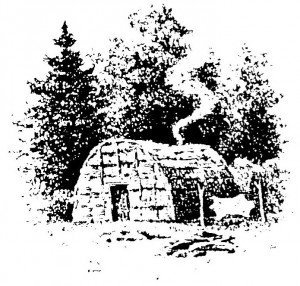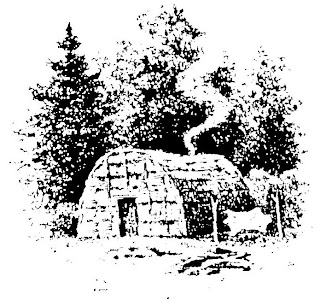
The Native American Institute of the Hudson River Valley and The New York State Museum are hosting the 12th Mohican/Algonquian Peoples Seminar at the NYS Museum in Albany this Saturday, September 15, 2012. A complete list of topics related to Northeastern Native American culture from prehistory to present is included below, along with the days itinerary.
9:00 – 9:30 Registration –
9:30 – 10:00 Welcome & Board Introduction: Mariann Mantzouris & Kevin Fuerst
Presentation of Colors by the Mohican Veterans
10:00 – 10:30 JoAnn Schedler
Mohicans in the Civil War
JoAnn Schedler, BSN, MSM, RN and a Major, US Army Nurse Corps Reserves (Retired). She served over twenty years with the 452 Combat Support Hospitals (CSH) of Wisconsin. She is a life member of the Mohican Veterans and Reserve Officers Association and a member of the American Legion in Gresham, WI. In 1985 to present she serves as a founding board member for Indian Summer Festival. She serves on the Stockbridge-Munsee Community Tribal Historic Preservation Committee and the Constitution Committee and is a Peacemaker for the Stockbridge-Munsee Tribal Court. She was the first Nursing Instructor for the Associate Degree Program at the College of the Menominee Nation 2008/ 2009 and is a member of Sigma Theta Tau International Honor Society of Nurses since 1992.This continues a presentation given last year on this subject.
10:30 – 11:00 Judy Hartley
Mohican Diet and Disease in Pre-contact America.
Written information by early Dutch explorers as well as oral histories transcribed by missionaries has provided insight into both the diet and general health of the Mohican Indians at the time of the arrival of
Henry Hudson in the early 17th century. From these sources as well as current-day research, it is possible to capture the essence of Mohican daily life before the arrival of Europeans.
Judith Hartley grew up on the Stockbridge-Munsee/Band of the Mohicans reservation in northern Wisconsin. Her mother was a Mohican who was active in tribal governance—-serving for years as the elected tribal treasurer. Judith left the reservation upon high school graduation to attend college. She has a B.S. degree in biology and worked for years in pharmaceutical research. Currently she has obtained an MBA and has worked for the past 22 years for Roche Diagnostics Corporation, a global pharmaceutical and health care company. As retirement approaches, Judith endeavors to give something back to the tribe by way of historical research, poetry and speeches concerning her people.
11:00 – 11:30 John M. Smith
Esopus Indians and the Ulster County Trader
Findings from a recently discovered Dutch account book of the fur trade in Ulster County are discussed that provide new insights into the lives of Esopus individuals and their families in the early eighteenth
century.
John M. Smith is an independent historian and contributing author to New York State Museum bulletins, the Hudson River Valley Review, and co-editor with Dutch Historian and translator Kees Waterman in the forth coming book Munsee Indian Trade in Ulster County, New York, 1711-1732.
11:30 – 12:00 Katy L. Chiles
Hendrick Aupaumut: An Eighteenth-Century Mohican Diplomat
This paper provides an introduction to the work of Hendrick Aupaumut, an eighteenth-century Mohican diplomat. A sachem who fought on the American side of the Revolutionary War, Captain Aupaumut was tapped by President Washington to serve as a diplomat to the British-allied Miami and Shawnee leaders who fought against white settlers. Aupaumut’s 1792 manuscript, a record written for U.S. governmental officials, was printed in the 1827 Memoirs of the Historical Society of Pennsylvania. This talk muses over Aupaumut’s “errors” in spelling and grammar, including one interesting clause: “these white people was” (sic). One might be tempted to assume, like his original interlocuters, that Aupaumut, as a Native American who had yet to master the English language, constructed a sentence with flawed subject-verb agreement. However, unlike U.S. officials who wrote that the manuscript contained many “incorrectnesses” (sic), Chiles argues that Aupaumut’s peculiar locution astutely explored the most contemplated concerns of early America: could the many former white British subjects ever become one people? What would the process of becoming “E Pluribus Unum” actually look like? Could people be both singular (denoted by the number of the verb was) and plural (denoted by the number of the demonstrative adjective these), and, most importantly for Aupaumut, how would all this effect how white settlers would interact with both his own and other Native American tribes? Furthermore, by comparing Aupaumut’s manuscript with the Society’s Memoirs, this presentation illustrates how editorial practices used by Aupaumut’s publishers conditioned the “original” text and allows us to consider Aupaumut’s intellectual sovereignty.
Katy L. Chiles teaches and writes about Native American and African-American literature, early American literature and culture, and critical race theory at the University of Tennessee. Her work has
appeared in journals such as PMLA and American Literature and has been supported by the National Endowment for the Humanities. She is currently working on a book manuscript entitled Transformable Race and the Literatures of Early America. This summer she was honored to do research at the Stockbridge-Munsee Band of the Mohican Nation in Bowler, Wisconsin. There she was able to share her work with and to learn from Sherry White, Nathalee Kristiansen, Leah Miller, and Betty Groh, all of
the Mohican Nation, Stockbridge-Munsee Band.
12:00 -1:30 Lunch on your own. Eating areas are located in the museum should you want to bring your own lunch. There are three restaurants within two blocks of the Museum.
1:30 – 2:00 Karen Hess
The Coeymans Family and the Mohicans
One of the largest 17th century land transactions between the River Indians and European settlers was transacted in 1672 by Maghshapeet, sachem of the Katskill Indians, to Barent Coeymans, Dutch colonial
miller. Confirmed as a patent in 1673, and awarded a royal confirmation in 1714, this vast tract of ancient tribal lands south of Albany stretched foreleven miles along the west bank of the Hudson River and westward twelve miles into the wilderness. The history of this patent, the home of two divergent cultures, and the relationships of Barent Coeymans and the Katskill Mohicans, will be explored in this
presentation.
Karen Hess is preparing a book about Ariaantje Coeymans whose portrait hangs at the Albany Institute of History & Art where Mrs. Hess is a docent. She has presented her research at a NYS Historical Association conference as well as other historical societies. An essential element of the story of this colonial woman is her family’s intriguing relationship with the Mohican Indians.
2:00 – 2:45 Eric Ruijssenaars
A Dutch Founding Father: Abraham Staats
In 1642, surgeon Abraham Staats and his wife Trijntje Jochems emigrated from Amsterdam to Kiliaen van Rensselaer’s vast estate, Rensselaerswijck (now part of Albany and Rensselaer counties). Staats’s job was not simply to treat ailing residents but also to advise the Patroon. He served as a magistrate of the court. Outside of court, he was often called on to resolve disputes between his neighbors. Well respected within Rensselaerswijck, Staats was also something of a diplomat. Entitled to trade in beavers, he learn
ed the Algonquin Indian language and was, therefore, able to act as an intermediary between colonists and Native Americans. The sloop Staats purchased to further his commercial interests placed him in contact with leaders in New Amsterdam (New York City) and allowed him to develop a personal relationship with Peter Stuyvesant.
Eric Ruijssenaars studied history at Leiden University graduating in 1988. He has written two books about Brussels and the Brontes (published in 2000 and 2003), is co-founder of Brussels Bronte Group in 2005. He started a bureau for historical research in Dutch Archives, in 2002. In 2011/2012 Eric was chosen Senior Scholar in Residence at the New Netherland Research Center in Albany.
2:45 – 3:15 William Staats
Hoogeberg, the Staats Family, and the Mohicans.
Staats Island (or the Hoogeberg: the “high hill.”) has been in the Staats family since the mid-17th century. The Joachim Staats homestead, dating from 1696, remains a family residence. Many generations of the family are interred here overlooking the beautiful Hudson River. This is where Colonel Philip Staats saved the life of the Mohican, Ben Pie, in the late 1700s. It is no longer an island but remains a place of great history with many stories to tell.
William Staats graduated from SUNY Albany with an MS in Education in 1957. Bill grew up at Staats Island near Castleton-on-Hudson, NY in the 1696 Joachim Staats homestead. He taught in 1965-66 at the Royal Melbourne Institute of Technology in Australia and also taught for several years in Hudson High School and for 35 years in the accounting and computer areas at Hudson Valley Community College. In 2009 he authored Three Centuries on the Hudson River.
3:15 – 3:45 Francis “Jess” Robinson
Ceremonialism and Inter-Regional Exchange Two Millennia before the Fur Trade: a View from the East Creek Site
The East Creek cemetery was excavated between 1933 and 1935 on the southeastern shore of Lake Champlain by representatives of the Museum of the American Indian- Heye Foundation. Despite its unfortunate desecration, the site contains rare and remarkable evidence of the elaborate ceremonialism and long distance exchange obtaining during the Early Woodland period (ca. 3,000-2,000 cal yr BP). While the presentation will concentrate on some of the more salient aspects of the site and what it suggests about the Native groups participating in the Early Woodland interaction sphere, mention will also be made of the analogies that one may cautiously advance regarding trade and exchange during the contact era.
Francis “Jess” Robinson is a PhD Candidate at the University at Albany-SUNY, a Research Supervisor at the University of Vermont Consulting Archaeology Program, and a current adjunct faculty member in
the Anthropology Department at UVM.
3:45 – 4:00 Kevin Fuerst
The Lebanon Spring: A Work in Progress
Kevin Fuerst, NAI President, long-time board member, and New Lebanon Town Historian will provide a status update on his efforts to preserve the famous curative Lebanon Spring and interpret its Native American associations.
4:00 – 4:15 Closing Remarks and Retreat of the Colors” by Mohican Veterans to conclude the conference.
 The Native American Institute of the Hudson River Valley and the New York State Museum invite you to submit a paper or other presentation to be given at the 13th Mohican/Algonquian Peoples Seminar held at the New York State Museum in Albany on Saturday, September 28, 2013.
The Native American Institute of the Hudson River Valley and the New York State Museum invite you to submit a paper or other presentation to be given at the 13th Mohican/Algonquian Peoples Seminar held at the New York State Museum in Albany on Saturday, September 28, 2013.




